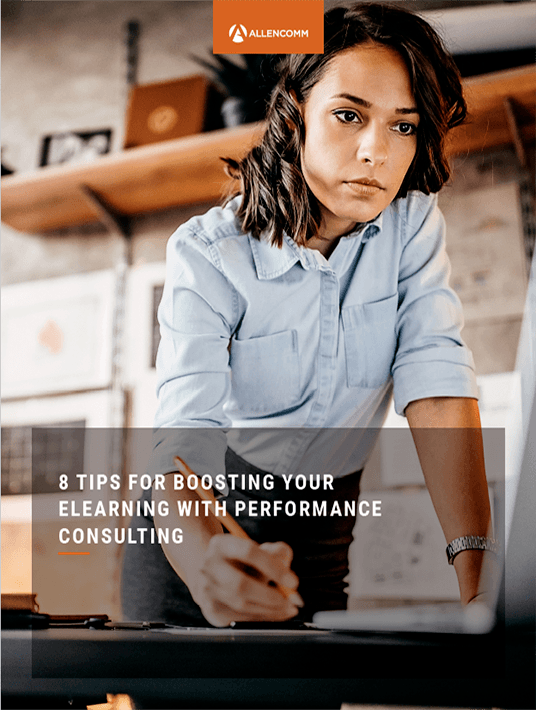Increase Employee Performance In A Learning Ecosystem
To meet your business goals, you must obtain the buy-in and engagement from your employees that are accompanied by excellent performance. Training delivery platforms can help collect, measure, and analyze data about performance throughout the learning experience. Employees get more value from custom eLearning materials that cater to their needs. You cannot simply train new hires and expect them to retain knowledge for their entire career. They require periodic refreshers and skill-building resources to continually improve. For example, microlearning online training libraries to help them bridge gaps and overcome daily obstacles. You might consider personalized online training paths or customized eLearning course maps so that they can focus on their own strengths and weaknesses. Such actions can definitely increase employee performance.

Let’s examine three delivery methods you can follow to create a cohesive, unified training experience for your employees.
Employee Performance Measurement Platforms
Tracking employee performance and usage data becomes more difficult as digital learning assets become more diverse. By using a learning portal with custom data-tracking and performance-analytics, you can measure completion rates, completion times, and assessment performance. You can then use that information to evaluate and improve the learning assets and activities that were less effective. Most training technology has some data-tracking function, but personalization platforms often use this information in real-time to create a more personalized experience.
Most learning platforms have some capacity to measure and increase employee performance, so it’s useful to consider the different areas of this training technology landscape.
- Traditional Learning Management Systems (LMS) are training delivery platforms that host eLearning and digital training assets. With a traditional LMS, you can author and publish training content, manage user profiles, and track basic data.
- Learning Experience Platforms (LXPs) provide a way for users to interact with a wide range of formal and informal learning experiences and assets.
- Learning portals, on the other hand, are more of a personalized gateway to eLearning assets. Customization in the User Interface, functions, and integrations enables users to align the platform with their organization’s unique processes and technologies.
Learning Platforms
Learning portals and Learning Management Systems are the most common training delivery platforms for personalized learning. While organizations often fail to use these systems effectively, they can create a cohesive learning experience that spans employee onboarding, daily work challenges, and continuous learning when fully integrated into your processes.
The learning journey for different departments and individual roles can vary. Your learning portal should support these differences. For instance, create a dashboard for each role type. This can be as simple as having meters for the unique skills relevant to their role that show their progress through a course. Ideally, this would also be paired with a role-specific learning path, skills maps, leaderboards, and social cohorts to round out the learning experience.
Be sure to choose a learning platform with the capabilities to measure and analyze your learners’ progress, as well as increase employee performance. After all, the more detailed performance data you have, the better you can gauge the effectiveness of your courses. Most learning technology can track information like:
- Course completion rates
- Standardized assessment scores
- Time spent within individual sections
With immersive eLearning activities, like realistic simulations or interactive videos, it can be difficult to accurately measure learner behaviors as both the activities and learner behaviors are more complex. Aligning data with analysis and reporting features will be invaluable as you work toward measuring training impact and ROI. And much of that work can be done by working closely with a training consultant to customize a platform to your needs.
Learning Ecosystem
The final delivery method is also the most complex and overarching one. The learning ecosystem is the foundation and the scaffolding of your learning culture, enable a cohesive and relevant learning experience and uphold your brand. It is made up of interconnected, unified systems that provide a cohesive learning experience for employees at all levels. It functions to deliver performance supports, job aids, workflow tools, and resources at the right time, to the right employee, in the right form.
The first key to a learning ecosystem is a central hub. This is an integrated employee development platform that is connected to each piece of learning your employees will use, requiring you to bring together analytics, aggregated platforms, and data feeds to effectively deliver training and resources. Thus, a central hub can ensure increasing employee performance with all the perks it entails.
Note that the LMS, career development platform, and resource tools are interconnected to allow for a comprehensive, Just-In-Time learning experience that accurately facilitates the learning and support your employees' needs on the job. Diagnostics can create a tailored development planner from which micromodules can be pushed to individual learners. Once you have the central hub in place, you can create diagnostics for your employees to personalize their training experience and create personalized learning paths.
How To Leverage Personalization In Your learning Strategy
Leveraging the personalization aspects of your training technology creates a more engaging learning experience. You can tailor course navigation to individual needs to increase employee performance. Remember, no one likes spending time going over the information they already know or trying to navigate an unintuitive learning method. However, that same data can be used to improve upon eLearning activities and training assets. As you plan your training technology for personalization, also keep in mind the benefits of detailed individual performance data. That data is vital for increasing engagement, improving learner experience, and driving learning outcomes.
To learn more about training technology, download our eBook 8 Tips For Boosting Your eLearning With Performance Consulting. Also, join the webinar to find out additional information about virtual learning best practices and more.







